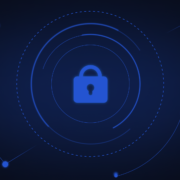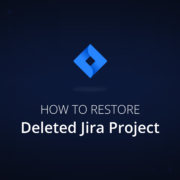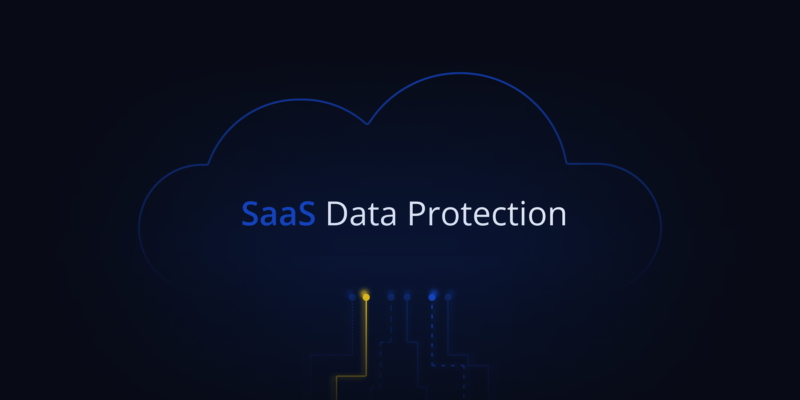
Top SaaS Backup Solutions & Tools for SaaS Data Protection
A SaaS Backup solution should definitely be considered in your data protection strategy. Backups generate copies of your data, and as a consequence allow for a quick recovery in case of data loss due to accidental (or intentional) deletions, cyber-attacks, or outages. These solutions guarantee that businesses can stick to their plans, help stay compliant with industry standards or regulations, and protect critical data without relying on SaaS providers’ built-in security features, which may sometimes be a bit limited.
Why exactly should I consider a SaaS backup solution?
There is a common misconception that cloud and SaaS providers fully protect customer data – yet let’s not be misled… It’s a myth. The Shared Responsibility Model makes it clear that service providers are responsible for maintaining service functionality, while users’ duty is to think about their account data protection.
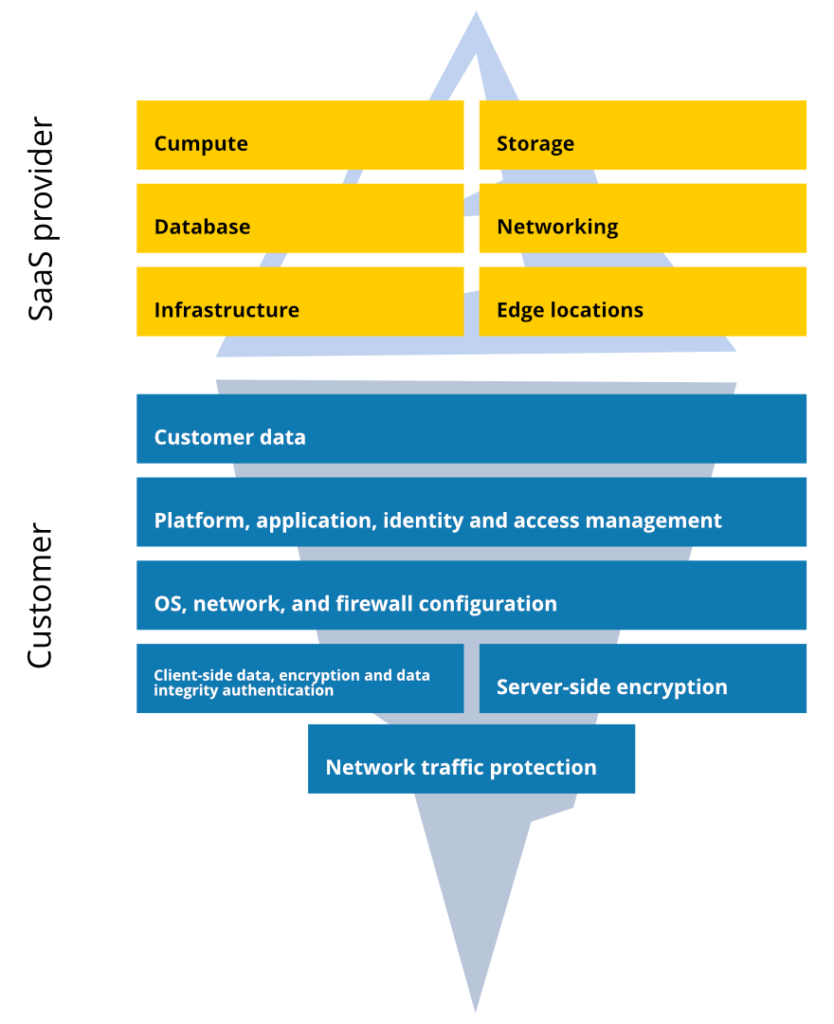
Need proof? You can check it yourself – as the major service providers such as Atlassian, GitHub, or GitLab recommend their users to have regular backups. For example, here is a statement for the Atlassian Security Practices:
“We do not use these backups to revert customer-initiated destructive changes, such as fields overwritten using scripts, or deleted issues, projects, or sites. To avoid data loss, we recommend making regular backups.”
💡 Do you want to find out more about how the Shared Responsibility Model works within different platforms? Then, make sure to check out our series of blog posts on the Shared Responsibility Models:
- GitHub Shared Responsibility Model
- Atlassian Shared Responsibility Model
- GitLab Shared Responsibility Model
Benefits of SaaS backups – Use Cases
Regular backups of SaaS applications are important for a number of reasons. Let’s take a look at the top benefits that you gain when you have a backup solution in your corner:
Retention
Limited retention is a common issue with SaaS applications. For example, Jira has a retention period of 60 days. After this time, data cannot be restored or recovered. In addition, if you cancel your subscription or your payment fails, this retention period decreases to 15 days. When it comes to Microsoft, you data can be stored at most for 30 days for active deletion scenario, and 180 days for passive one.
Yet with a third-party backup solution that supports long-term or unlimited retention, you can be on the safe side. This can be helpful for recovery and archiving purposes, but also for compliance, as heavily regulated industries may require long or even unlimited retention.
Data security against cyber threats
Protection against cyber threats is another reason to consider a backup solution. Imagine that your data has been affected by ransomware… You do not have access to it, you cannot decrypt it without a key, and a cybercriminal demands a ransom (and the sums may be huge!). In this case, all your time and resources will be put into dealing with the consequences of the lost data.
However, if you have a backup solution with your private custom encryption key, immutable storage, and DR capabilities, even if ransomware hits your data it won’t be spread in your storage and infects your entire data. So, you will be able to restore your data from the point in time when it wasn’t infected.
Human error
This is one is very difficult to control. Everyone can make a mistake… It’s human nature – you can mistakenly delete something, which will turn out to be a crucial part of code or an important account containing critical data. Therefore, apart from training and educating your team, you should implement a backup solution, as a safety net. Thus, if one of your employees, accidentally or intentionally, deletes important information, you can simply restore your data from a backup and continue working, with minimal disruption and downtime.
Compliance
There are certain fields like healthcare, finance, and government, which have strict regulations regarding data integrity, availability, and retention. Regular and most importantly complete backups guarantee that your organization can meet these rules because you will have secure, recoverable copies of all your critical data. Thus, you will be able to meet even the most strict security requirements and audits, like SOC 2, ISO 27K, NIS 2, DORA, and others.
Business continuity
Your company can avoid permanent data loss if you back up critical data on a regular basis, with a third-party backup and DR app. This is important for the security of your data from both internal and external threats, such as accidental deletions and cyber attacks.
Backup is an important component of any business continuity plan as it guarantees that important company processes can be maintained during and after a disaster. Thus, reducing downtime, operational disruption and keeping the main business operations on track.
SaaS backup solutions – which type to opt for?
Backup solutions can differ when it comes to their approach and functionality. Native SaaS backups, for example, use built-in tools. Cloud-to-cloud backups guarantee you redundancy as they store data across multiple cloud environments. Integrated SaaS backups, in turn, combine data protection and other IT management functions to provide you with full coverage. Each one of these provides specific advantages that can cater to different business needs or risk management strategies.
Native SaaS backup
Well, first let’s take a look at Native SaaS backups. These use SaaS platforms’ built-in capabilities to protect data directly within an environment. Backup here is built into the platform, which makes the backup process simpler for users and eliminates the need for external backup solutions. Oftentimes, larger SaaS providers, like Microsoft and Google may invest a lot of resources into developing these features, which increases the overall effectiveness and user accessibility of their backup solutions.
Although all of this seems convenient, native SaaS backups have downsides when it comes to complete data protection. They only give you basic security features such as temporary version histories or recycling bin functionality; Even though this aids data recovery in case of minimal user errors or accidental deletions, these features are not enough for complex recovery of data, caused by advanced cyber threats or synchronization errors.
What is more, native SaaS backups allow less frequent backup schedules and shorter data retention periods. Therefore, it may be difficult to meet the guidelines of data management strategies or compliance with industry standards. While these functionalities could potentially serve as a first line of defense, they are limited and not sufficient for serious disaster recovery.
If your organization needs more strict cyber security and rapid recovery capabilities, you should not rely solely on native backups – it’s simply too risky. We believe it is recommended to swap or at least support these with more advanced third-party backup solutions. This way, your approach to DevSecOps not only protects data integrity but also maintains operational resilience and compliance.
Cloud-to-cloud backup
The aim of Cloud-to-cloud (C2C) backups is to protect data in cloud-based platforms like Jira Software, Google Workspace, or Microsoft Office 365. C2C backup provides you with automated data transfers from one cloud service to another, and as a result, reduces the need for any human involvement (decreases the risk of human error but still provides data security and availability!). C2C backup helps with automating data protection; but on top of that, it also improves it by storing backups in different geographical locations – other than the SaaS providers’ primary data centers. The geographical redundancy is important here as it guarantees that backups aren’t affected by any local service disruptions or failures that may occur on the primary SaaS provider’s end.
These backups integrate directly with SaaS platforms and guarantee security for your data. That’s why they are a key tool for businesses that rely on cloud services in their operations. Continuous and automated backups put you at an advantage, because your data is always available and recoverable, and as a consequence, this supports business continuity and compliance with data protection regulations.
If your organization is using multiple cloud services, Cloud-to-Cloud backups are a good option for you, a reliable approach to protect data across different platforms. This, as a result, reduces the risk of data loss and guarantees operational resilience.
Integrated SaaS backups
If you are looking for the most complete type of backup, integrated SaaS Backups are exactly that; they are reliable third-party solutions and provide data security for different SaaS platforms. Protection from backup vendors exceeds the fundamental capabilities of native backups. You may ask why or how… Well, (among others) they have features that automate the backup processes, allow you to customize data retention times (even unlimited), and provide exact point-in-time data recovery options, as well as granular restore and cross-over recovery features.
Let’s say you want to reduce the dangers of data loss due to human error, cyber threats, and synchronization problems – these advanced functions are what you may be after. Especially for enterprises that use a range of cloud services, integrated SaaS backup providers can be particularly helpful since they usually offer a unified method for data security and recovery. Moreover, these solutions follow the 3-2-1 backup rule (or any other relevant one), which means your data is not only always available but also recoverable! This should support business operations and compliance with industry regulations.
Integrated SaaS Backups help with strategic business objectives as they simplify dealing with risks and governance practices. This approach not only protects data but also reinforces the company’s commitment to maintaining high levels of data oversight and trust.
What should a comprehensive SaaS backup solution include?
Let’s outline the features and functionalities you need to look for when it comes to a SaaS backup solution:
- Automated scheduled backups, so that you can set and forget. It will guarantee that data is consistently protected without the need for manual input.
- Full data coverage, including repositories, metadata, and project data.
- Restore and Disaster Recovery features, including point-in-time restore, granular recovery, restore to the same or a new account/user, restore to your local instance, or cross-over recovery.
- A multi-storage system that will allow you to keep your data in different locations, both local and cloud, and keep up with the 3-2-1 backup rule. What’s more, you should be able to enforce replication between your storage destinations.
- Ransomware protection.
- Unlimited retention as it can be the key to compliance.
Top 6 SaaS backup solutions
Well, we have finally approached the main topic of the blog post… So, let’s look at the SaaS backup solutions you can find in the market arena…
GitProtect.io
Regarding backup and Disaster Recovery, GitProtect.io appears as a standalone for DevOps stack data protection. The backup vendor allows you to back up GitHub, Bitbucket, GitLab, and Jira. With this backup solution, you get protection for your source code repositories, metadata, and project management processes.
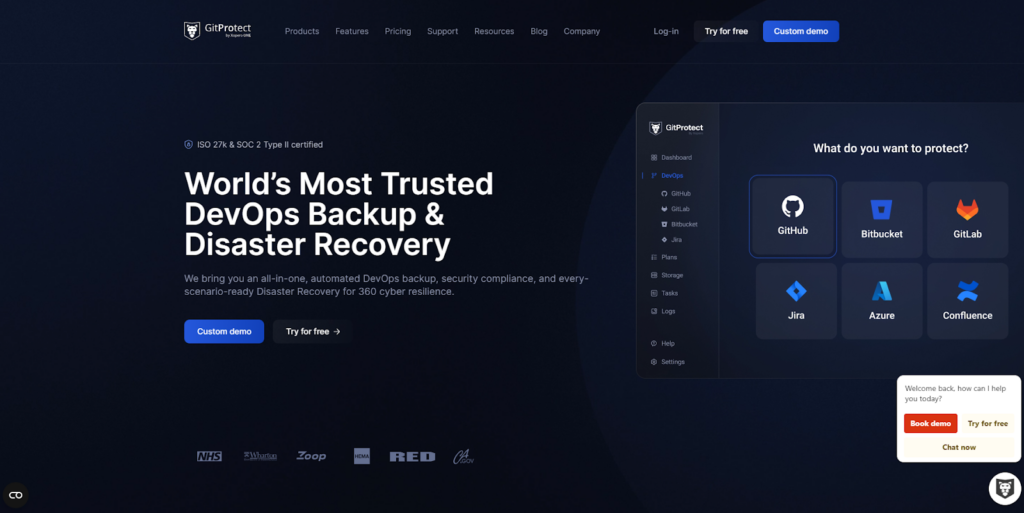
Let’s take a look at GitProtect.io backup and DR features:
Set & Forget – automated flexible backups with full data coverage
The backup solution allows you to schedule and customize backups to run automatically at whatever frequency you need. Moreover, GitProtect.io provides full data coverage, so that you can be sure that all your critical DevOps and project management data, including attachments, issues, etc., are secured. What’s more, when you set your backup plan for your DevOps environment, you can choose between full, incremental, and differential backups, and set the level of encryption, retention, etc.
Support for multiple storage options
GitProtect.io is a multi-storage system. It means that you can backup your DevOps data to different storage instances. Once you set up a backup plan you get GitProtect.io’s free unlimited storage to start protecting your DevOps stack immediately. Moreover, you can – bring your own storage AWS, Azure Blob Storage, Google Cloud Storage, Wasabi, Backblaze B2, and any other compatible one with S3, or local storage. What’s more, GitProtect.io permits replication between storages, so that you can have consistent copies in a few destinations. Thus, you can follow the 3-2-1 backup rule to meet security and compliance requirements.
True Disaster Recovery and restore capabilities
Providing reliable disaster recovery features, GitProtect.io is aimed at foreseeing any disaster scenario – service or infrastructure outage, human error, accidental deletion, ransomware attack, etc. This guarantees that in the event of a failure, your data is accessible and recoverable from any point in time, which helps to maintain data integrity across your DevOps environment. Thus, in the event of a disaster, you can choose between granular restore and full backup recovery from any point in time thanks to unlimited retention. Moreover, you can restore to the same or new repository or account, to your local instance, or cross-over recovery to another git hosting service (any combination between GitHub, GitLab, or Bitbucket).
Security and compliance
To help organizations meet security and compliance requirements, GitProtect.io provides full data coverage, AES 256 encryption in-flight and at rest with the possibility to set your own encryption key, immutable backups, ransomware protection, role-based access control, easy monitoring with custom email or Slack notifications, audit logs, SLA and compliance reports, and Disaster Recovery Technology proven by both SOC 2 Type II and ISO 27K audits.
Xopero Software
Being a backup & Disaster recovery solution for SaaS (Microsoft 365) and DevOps environments (as well as physical and virtual ones), Xopero Software is built to complete automated protection for organization’s critical data and helps enterprises meet their shared responsibility, security, and compliance requirements.
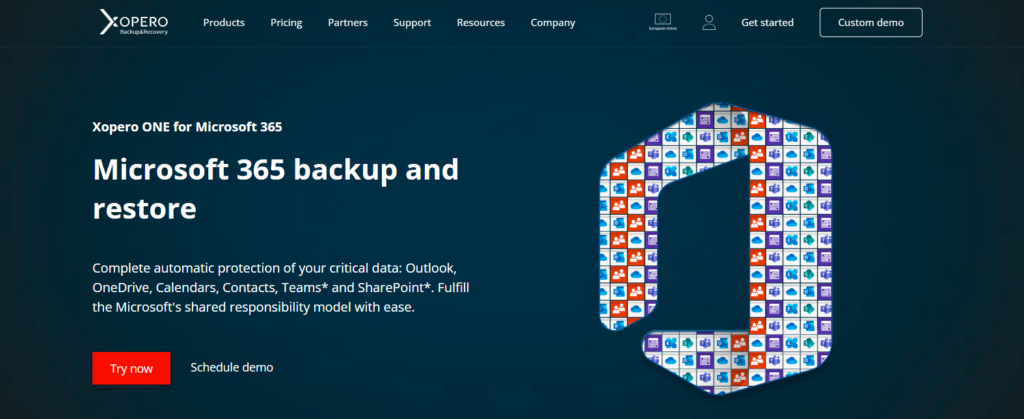
Xopero provides the following backup and restore features:
- Automated scheduled customized backups – you can schedule your backups at the most appropriate time, e.g. to avoid bandwidth throttling.
- AES-256 encryption in-flight and at rest with the possibility to set your own encryption key.
- The possibility to choose backup type – you can schedule full, differential, and incremental backups.
- Multi-storage compatibility, both cloud and local.
- Compression – you can save your storage space.
- Replication to have consistent copies in a few storage destinations and meet the 3-2-1 backup rule.
- Long-term or unlimited retention to meet your security, organization, and compliance requirements.
- Ransomware protection as backup is the final line defending against ransomware.
- Restore and Disaster Recovery capabilities – full recovery, granular restore, cross-user recovery (to another Microsoft 365 suite), rectore to your local device, etc.
- Monitoring & management capabilities – all in ONE console: role-based access controls, email/Slack notifications, SLA, compliance reports, etc.
Veritas
Providng a multi-layered data protection for SaaS apps, Veritas heps organizations to eliminate uncertainty and reduce the risks by providing automated backups.

The solution provides it customers with:
- Incremental backups for greater frequency to meet RTO and RPO.
- WORM compliant storage as a ransomware prevention measure.
- End-to-end encryption for cloud data security
- Restore capabilities – you can use any of granular and multi-level recovery to a preferred location (the same or another cloud location, on-prem).
- Single-tenant architecture ensures no risk of data crossover and provides dedicated resources.
- Granular enhanced role-based access control.
Own Backup (by Own Data)
Specializing on data protection for Salesforce, Microsoft, and Servicenow, Own Backup providesautomated backup and stress-free recovery options to help orgaizations to keep up with compliance needs.
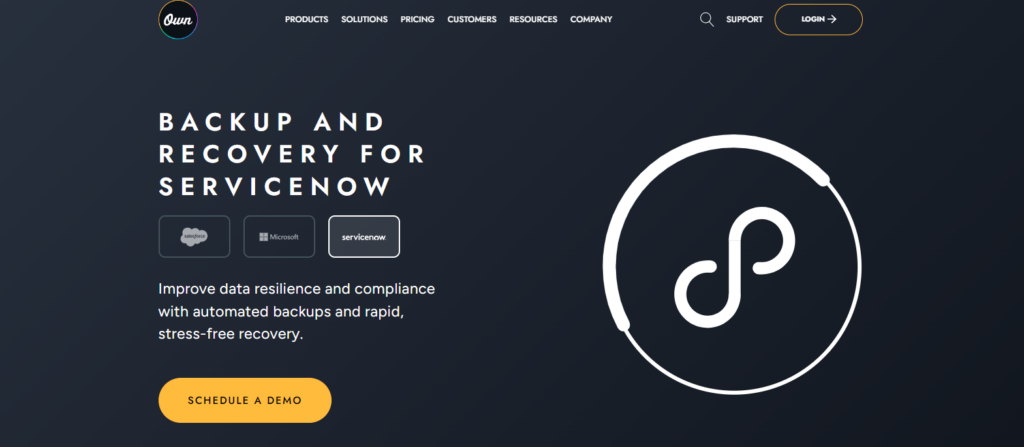
When you opt for this backup option, you can excerpt:
- Automated daily backups for any number of instances.
- On-demand backups to instantly make a copy of the entire instance or some data.
- Alerts and notifications that you get to monitor backup performance.
- Rapid recovery with the possibility of full and granular restore.
- Unified data management to manage data policies, export data, simplify regulatory complince, and get centralized backup operations.
afi.ai
Leveraging AI to provide visibility and ensure security of data, afi.ai is aimed at simplifying backup for Google Workspace, Microsoft 365, and Kubernetes.

With afi.io, uses can excerpt for the following features:
- Automated frequent backups and on-demand backups for all the organization users without any limits.
- Backup storage with unlimited retention.
- full-text search capability, which allows you to browse within the content of documentations and emails, in addition to metadata for granular, item-level recovery.
- monitoring systems with smart alerts and notifications to warn you about potential threat
- AI-powered ransomware protection which means that the AI engine performs preemptive backups if an attack is detected
Backupify
Beeing primarily made for businesses that use Google Workspace and Microsoft 365., Backupify is a SaaS backup solution that is focuced on providing reliable and automated backups.
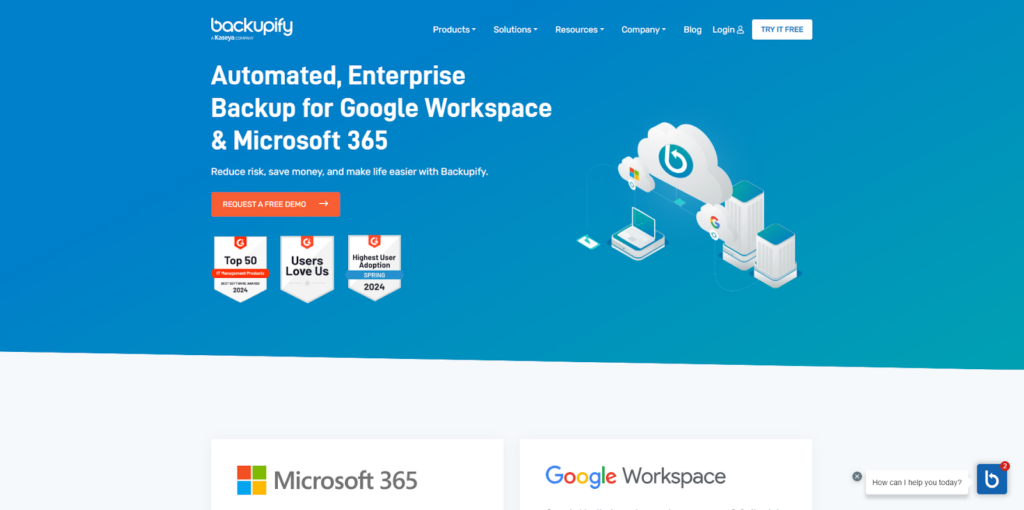
Among its features, it’s possible to mention:
- Automated backups for up to 3 times per day, or backup on demand at any time
- Customized retention policies to specify how long you want your backups to be stored.
- Advanced encryption for your data both in transit and at rest, which grants you a high level of security and helps to stay compliant with the relevant industry standards.
- Point-in-time restore to recover your data from a specific point in time, in case of a ransomware attack or any other disaster.
Last but not least – a few steps to implement your SaaS backup strategy
Data security should always be taken seriously. A reliable SaaS backup provider can be helpful in this matter; it is one of the critical pillars of your cyber defenses. Why? It guarantees the security and resilience of your company’s most valuable asset – data.
In order to build an efficient SaaS backup strategy, which covers all of your needs, you should carry out a thorough analysis and have an intentional plan of action. Take a look at the key components of such a strategy and its importance in protecting your organization’s data and business continuity.
- Ensure that you have automated backups
- Be sure that your backup solution provides you with full data coverage
- Veryfy what monitoring capabilities your backup solution offers
- Check what backup frequency your backup solutions offers – it should meet your RPO and RTO
- Make sure that your backup option provides you with the guarantee of data restore – point-in-time retore, full, granular recovery
- Ensure tha you backup provider has ransomware prevention measure
- Trust complince – ensure that your backup solution meets security complince, including SOC 2 Type II, ISO 27001, GDPR, etc.
Takeaway
To have peace of mind that your SaaS data is safe and sound, you need to know that your backup and Disaster Recovery solution is reliable and trustworthy. SaaS backups help you to stay aligned with the Shared Responsibility Model, improve your cybersecurity posture, which, in turn, guarantee business continuity, help with regulatory compliance, and protect your data against insider threats, human errors and cyberattacks.
[FREE TRIAL] Automate DevOps backup and don’t risk data, time and money 🚀
[LIVE DEMO] Let’s discuss your needs and see a live product tour



